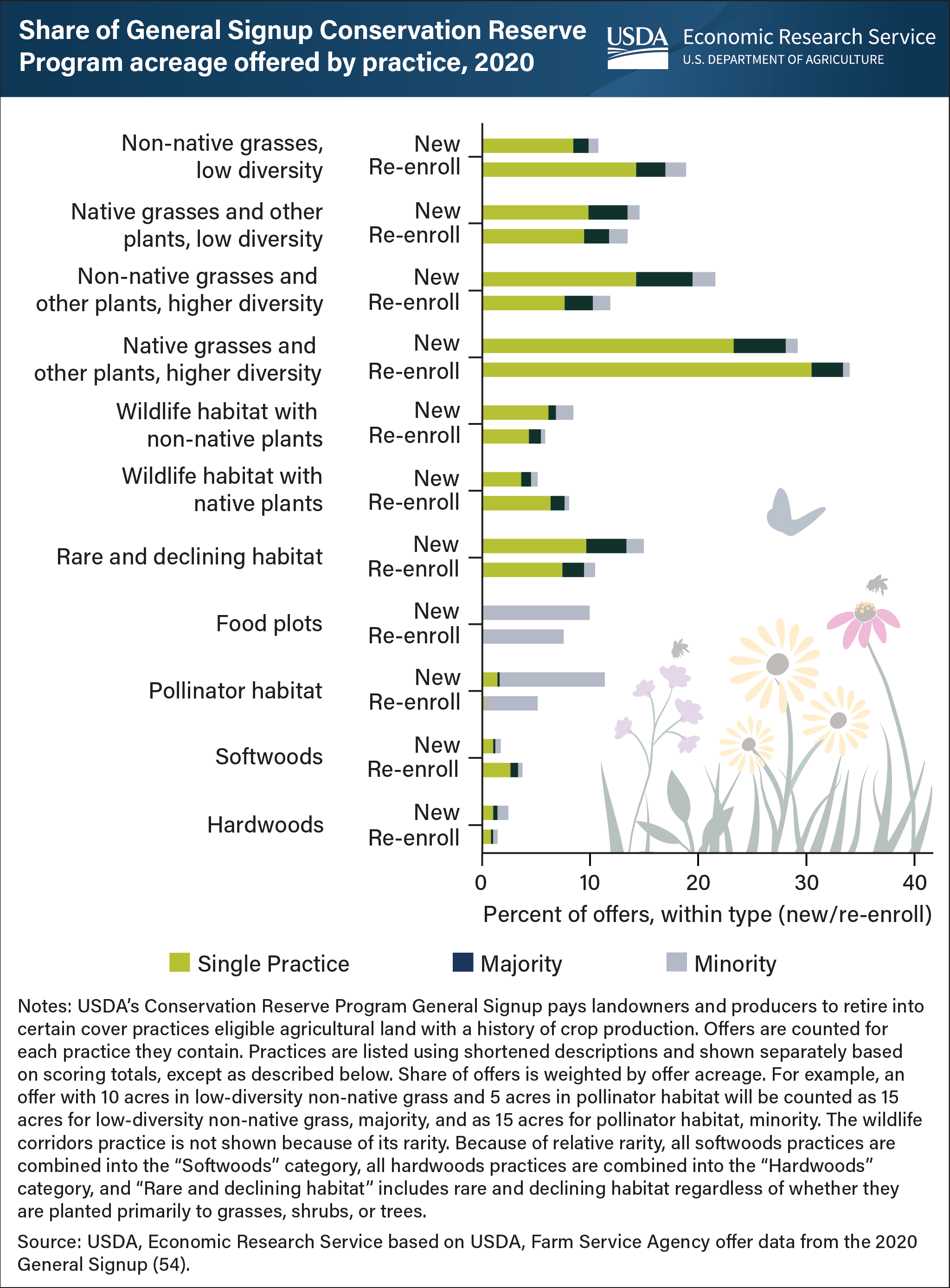A high-diversity mix of native grasses is the most common practice selected in the Conservation Reserve Program General Signup
- by Bryan Pratt and Steven Wallander
- 3/9/2022

USDA’s Conservation Reserve Program (CRP) General Signup allows landowners and producers to retire eligible agricultural land with a history of crop production in exchange for payment. Landowners and producers may select one or more practices that they agree to establish for the duration of a 10- to 15-year contract, if chosen for enrollment. Practices are awarded different points based on the Environmental Benefits Index (EBI), which incorporates the expected impact of the chosen cover practice on wildlife benefits and carbon sequestration, as well as on the anticipated durability of that impact. Landowners and producers who choose a cover practice worth more points have a greater likelihood of acceptance. In 2020, more than 80 percent of re-enrolling offers and more than 90 percent of offers on land not previously enrolled in CRP chose a practice other than the lowest-scoring practice, which is non-native grasses with low diversity. The most common practice is native grasses and other plants with high diversity, which provides between 40 and 70 additional points relative to the low-diversity non-native grass practice, while only requiring the use of native species and slightly greater species richness and complexity. Grasslands practices (native and non-native grass practices) are the most common group of practices, followed by wildlife practices (wildlife and rare and declining habitat practices). Pollinator habitat is rarely the only practice on an offer. Tree practices are relatively rare. This chart is drawn from the Cover Practice Definitions and Incentives in the Conservation Reserve Program report published by USDA’s Economic Research Service, February 23, 2022.

